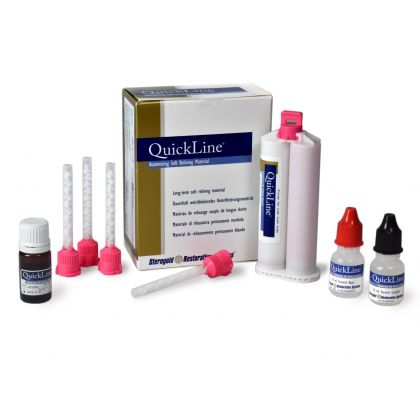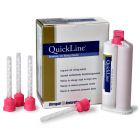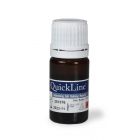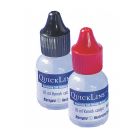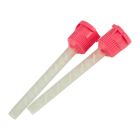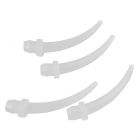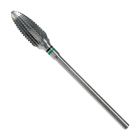QuickLine Introductory Kit
QuickLine® Introductory Kit Contains:
* 1 (50 ml) cartridge QuickLine®
* 2 (10ml) bottles base & catalyst Varnish
* 1 (5ml) bottle Primer
• Odorless & tasteless
• Finishes easily
• Automixing for fast, easy, mess free application
• Improves the fit of complete and partial dentures
• Relieves pressure under sore spots and undercuts
• Provides support for implant healing beneath a denture
• Can be used to reproduct soft tissue contours on model work for fixed prosthesis and implants
| QuickLine | ||
| Composition: | Vinyl silicone, hydrogen silicone, additives, platinum catalyst, aerosil | |
| Technical Data: | ||
| Mixing time | Automix | |
| Working time (incl. mixing) | 1:30 minutes | |
| Setting time, 32C (incl. mixing) | <=7:00 minutes | |
| Primer | ||
| Composition: | Ethyl acetate, modified polyacrylate | |
| Technical Data: | ||
| Evaporation time | 1:00 minute | |
| Varnish | ||
| Composition: | Vinyl silicone, hydrogen silicone, additives, platinum catalyst | |
| Technical Data: | ||
| Mixing time | 30 seconds | |
| Working time (incl. mixing) | >=1:30 minutes | |
| Setting time, 32C (incl. mixing) | <=7:30 minutes | |
QuickLine
1. Approximately how many arches may be relined with one cartridge?
Placing a generous amount of material in the denture (approximately 6.5g), you could do about 8 mandibular relines with QuickLine. An upper arch prosthesis would require more material and yield at least about 6 applications.
2. How long will the material last?
The product has been designed as a permanently soft relining material. This does not mean that it is a permanent material, but will remain soft during its lifetime. Relines using this type of material have a life expectancy of 1 to 2 years. Normal procedure would be to reline again in shorter intervals of time.
3. Is the purpose of the Varnish to prevent staining of the QuickLine?
The varnish does not influence the staining of the material but rather help to protect against bactericidal growth on rough surface areas.
4. How easily can the material be removed from the denture? What is the procedure?
Removal is done by roughly cutting away with a sharp instrument like a scalpel and further removing with the trimming tool supplied.
5. Any other helpful hints or information?
When preparing the denture, cut some mechanical retention into the peripheral borders of the denture. You may cut keyways, or a small trench along the periphery. This will aid the soft liner's adhesion to the denture base along the borders where the liner will flex.
It is important to apply the primer with special care at the edges and to avoid sharp angles (because it makes application of the primer difficult (a question of surface tension) and the patient may feel these edges through the soft relining material. Apply the varnish to absolutely dry and clean surfaces only!

